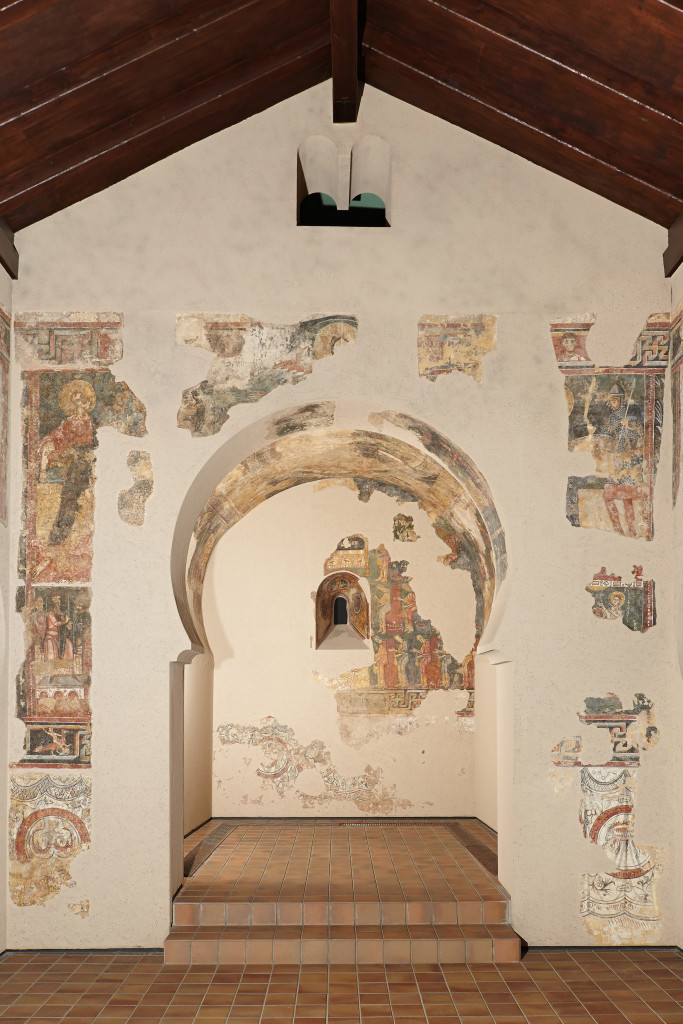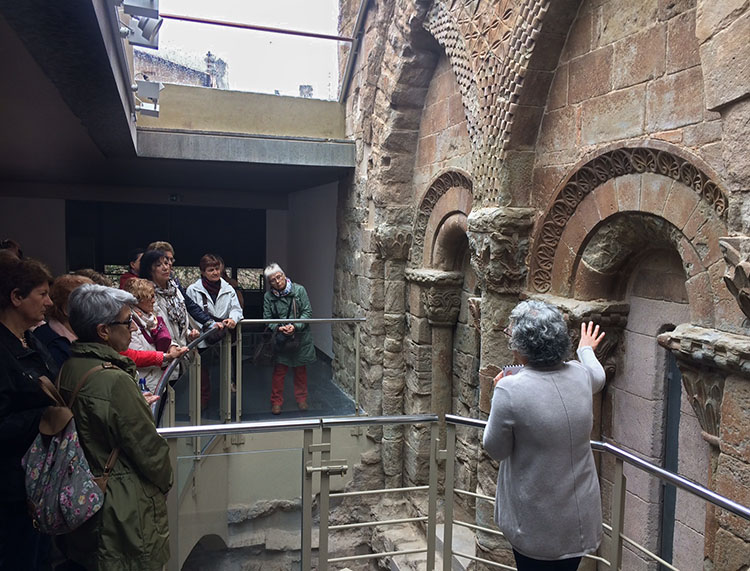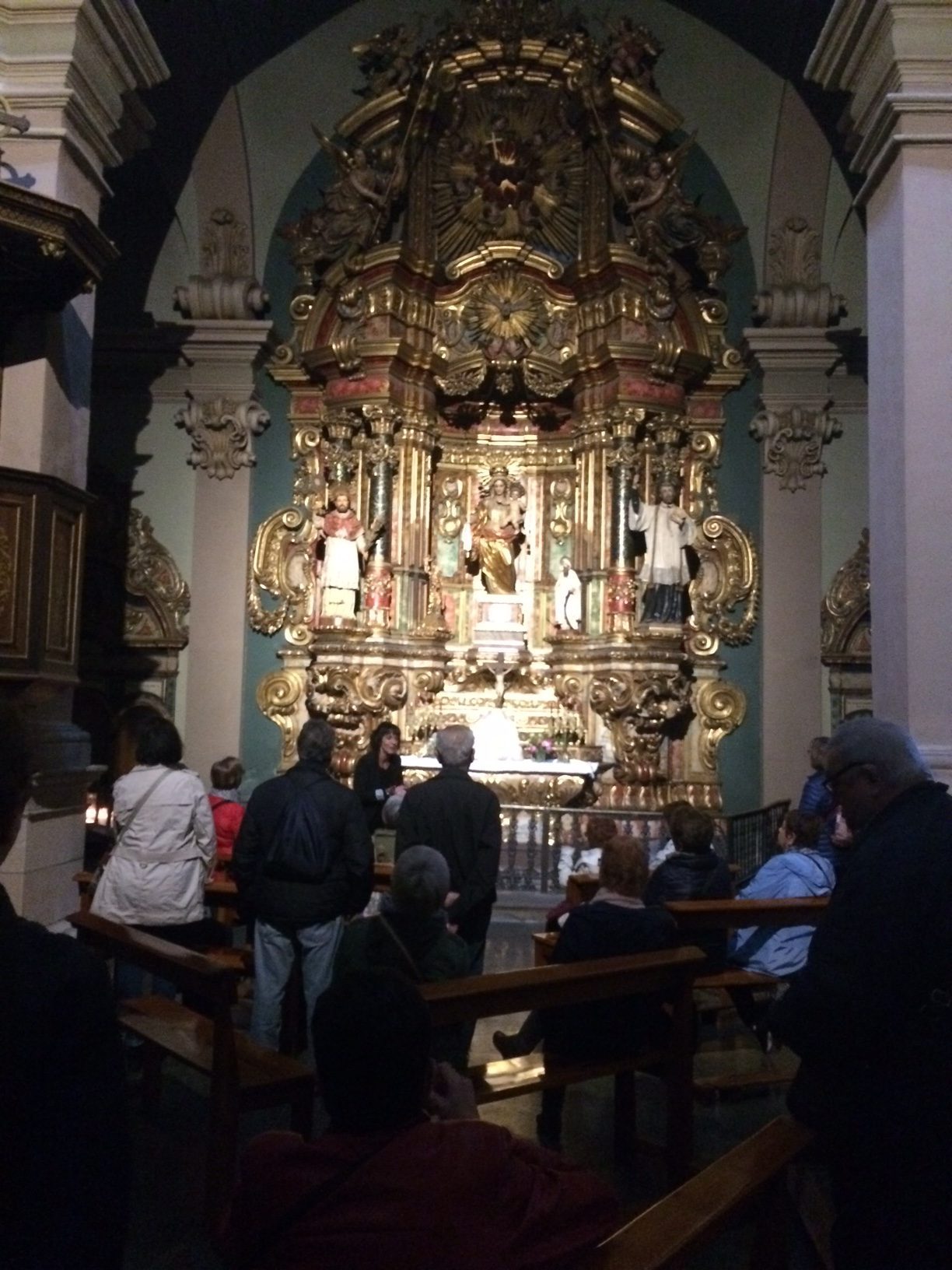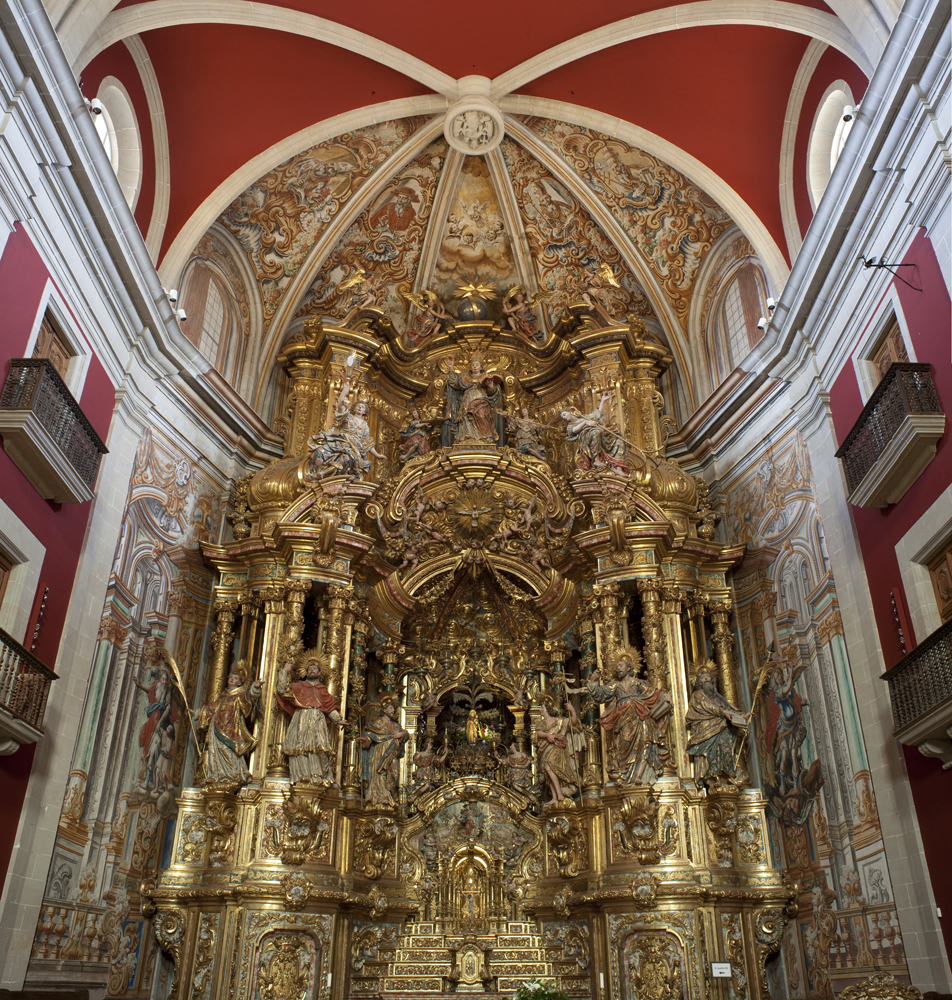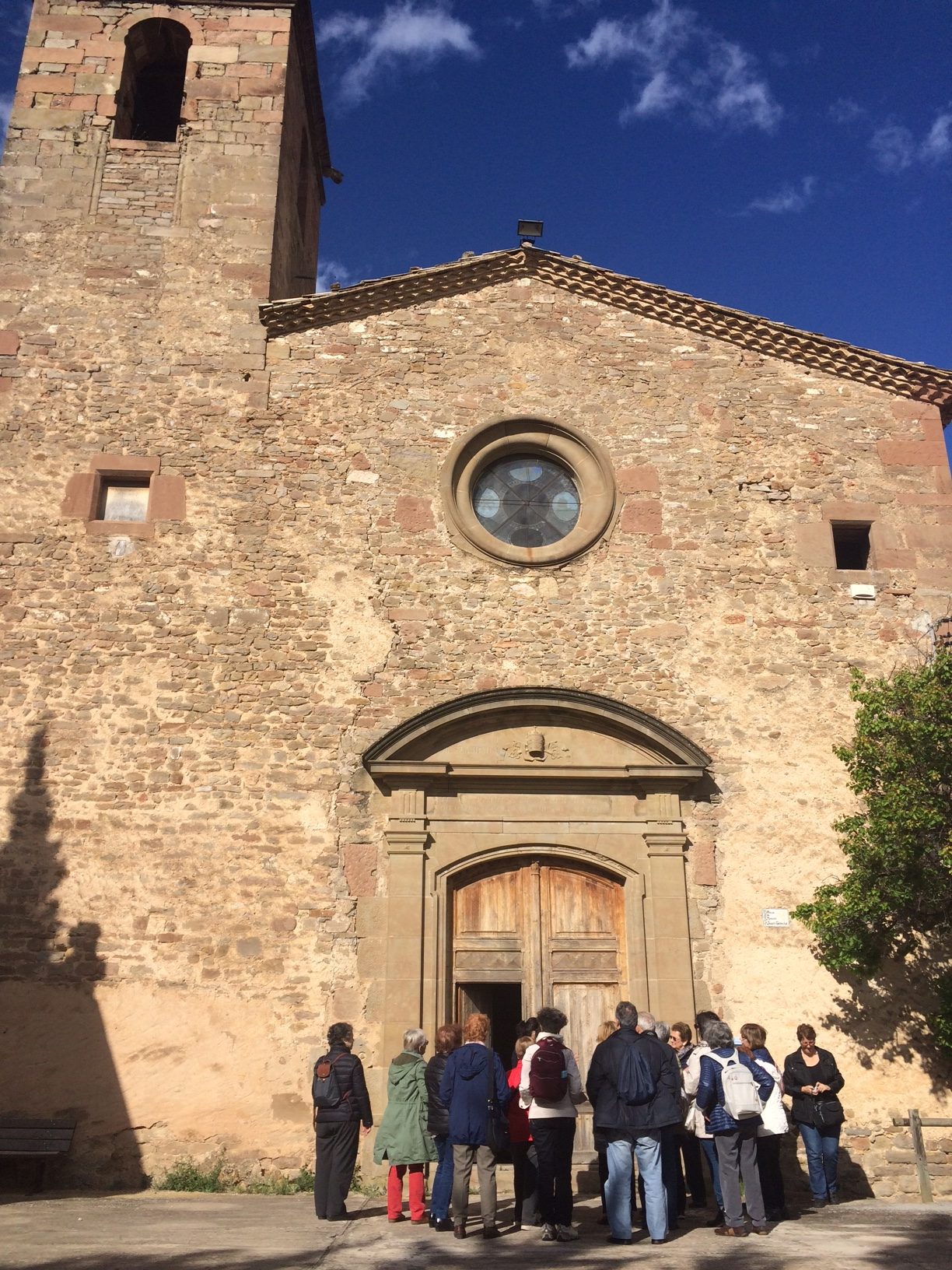Cristina Sanjust
Every quarter, the Amics del Museu Nacional take a trip to know better the Catalan heritage: “The museum’s walks”. The last one took them to discover the Solsonès baroque legacy. Cristina Sanjust was their guide and now she explains to us her experience of this visit from the inside.
As a tourist guide I have the privilege of witnessing the personal experiences of those who discover a space or a work of art for the first time. Very often when you enter you become transfixed by the images that are represented in an apse or even in an altarpiece. It could be that some people even find that the figures make them reflect on life or about themselves. But very few can say that they see themselves literally reflected. And that’s just what happened to a friend of the Museu Nacional d’Art de Catalunya, the other day during the visit to the Cathedral of Solsona.
Mural decoration of the central apse, the Church of Sant Quirze de Pedret, Cercs (el Berguedà)
The tour had begun with the discovery of the treasures conserved in the Museu Diocesà i Comarcal de Solsona. The collections of the diocese are located in various spaces of the building complex adjoining the cathedral. While we look at prehistoric and Romanesque pieces – among which it is worth highlighting the mural paintings of the church of Sant Quirze de Pedret– and of others from later periods, we could enjoy the cloister belonging to the monastery of Santa Maria.
The visit continued in the company of a local guide. Her explanations allowed the group to appreciate the different enlargements of the church from the first monastery and the visciccitudes that affected the building throughout the years. The aim was to discover the art of the Baroque period of the lands around Solsona. She first highlighted the altarpiece of la Mercè and afterwards, on the other side of the transept, over the chapel of the Mare de Déu del Claustre, patron saint of the city. The Mother of God (marededéu), from the 12th century, must have presided the altar of the first monastery, dedicated to Saint Mary. Made of stone, blackened over time, it was the work of the sculptor from Toulouse Gilabert.
History and legend of the Mare de Déu del Claustre
It’s name is explained because in the 13th century, with the arrival of the Albigensians, fearing for the integrity of the painting, the monks hid it in a well of the cloister that they were finishing constructing. According to legend, a child fell down the well but was saved thanks to the image he saw. Since then, it has always enjoyed a major local devotion. That’s why, in a period of economic boom, in 1726, the altarpiece was constructed in carved and golden wood which included the Romanesque figure, made by Josep Morató i Pujol, member of one of the main altarpiece makers of the period. This Baroque chapel was totally destoyed on 19th October 1810, during the French War, with the exception of the marededeu, which was saved from the flames because it is a pale image. In 1900 the patronage of the Mare de Déu del Claustre was ratified, which led to the reconstruction of the chamber, which was commissioned to the architect August Font.
In 1914 Bernardí Puig i Martorell, disciple of Gaudí, designed the benches and the lighting, and subsequently, in 1926, Puig i Cadafalch sculpted a new site for the marededeu. During the Civil War of 1936, the religious images would once again find themselves in danger, and on this occasion the Romanesque sculpture was hidden in the stairwell of the bell tower by the bell ringers Porredon and Augé, and at a later stage they wanted to evacuate it to France, but it would remain hidden in the Bishop’s palace of Vic. It wouldn’t be until the nineteen fourties that the architect Puig Boada and the mosaicist Josep Obiols i Palau would start a new altar project.
This child is me!
While the guide explained this last intervention, a friend of the Museum, surprised, said: “this child is me!”. Effectively, on one of the tympana (the area between the lintel over a doorway and the arch above) of the side walls, there was a painting of a young girl dressed in blue, the work of Miquel Farré i Albagés. This painter used the daughters of friends’ families as models for his works.
Two discoveries from the 18th century: the Santuari del miracle and Sant Pere de Matamargó
The discovery of the Solsonès Baroque continued with the visit to the Santuari del Miracle and the small chapel of Sant Pere de Matamargó, two jewells from the 18th century unknown to most of us. This could be seen reflected in the expressions of surprise and admiration on their faces. Most people, just after entering the sanctuary exclaim with an “wow!” that leaves them with their mouths open for quite a while. The grandeur of the sculptures of this machine of an altar of golden wood which is spread around the walls and ceilings of the building, leaves everyone thoroughly impressed.
The small chapel of Matamargó, very reduced in dimensions but not in the quantity of sculpted altarpieces surprised the group because it seemed that nobody had touched anything since the eighteenth century period. The two groups of buildings highlight the agricultural economic wealth of this area of Catalonia in a period in which a crisis had been qualified in the rest of the territory. Furthermore, it can be seen that the characteristics themselves of the art developed from 1600 onwards in the major European artistic ceentres, Rome or Versailles (Magnitude, immediacy, fleetingness, or theatricality), extend chronologically and geographically to places such as the Solsonès and as late as the end of the 18th century.
A visit full of surprising discoveries for most of us and filled with personal anecdotes. I’m sure we all took away with us good personal memories.


